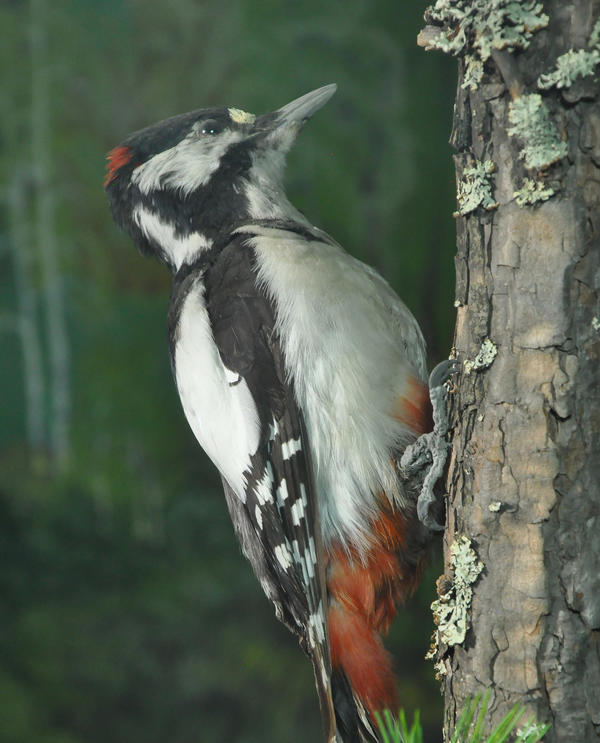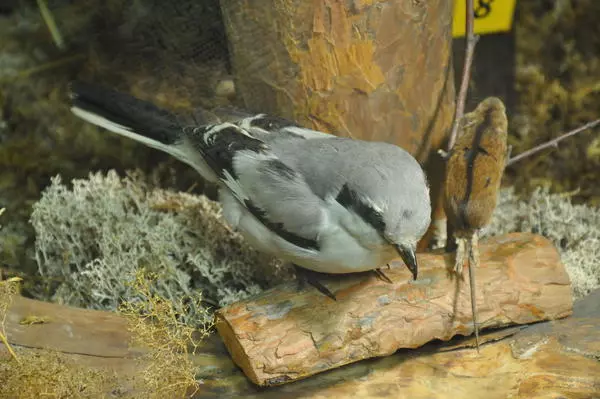The greater spotted woodpecker is one of the most wide-encountered representatives of the order of Piciformes. Its Latin name is Dendrocopos major. It inhabits the most diverse forest landscapes of the Palearctic: from the Canary Islands and northwest Africa to the east to Kamchatka and Japan, and almost everywhere it is an ordinary, numerous species.
The color of these birds is dominated by black and white tones, which in combination with bright red (pink in some subspecies) underwings imparts them a colorful look. The male has a red spot on the back of its head, and the female’s top of the head is entirely black; this is how they differ from each other.
This species’ breeding season lasts from late March to June. The construction of the nest is preceded by a noisy demonstrative behavior of birds, accompanied by screams, ‘drumming’ and mating games. The clutch usually contains 5 to 7 shiny white eggs. Both birds incubate them in turns, for about two weeks. At first, the chicks are quite taciturn, but with their first flight nearing, they become loud and start leaning out from the nest. At the age of about three weeks, they leave the nest.
In summer, birds feed on a variety of insects, collecting those on tree trunks and on the ground; they also dig up anthills and peel trees affected by pests. They feed their offspring the same ‘diet’.
The color of these birds is dominated by black and white tones, which in combination with bright red (pink in some subspecies) underwings imparts them a colorful look. The male has a red spot on the back of its head, and the female’s top of the head is entirely black; this is how they differ from each other.
This species’ breeding season lasts from late March to June. The construction of the nest is preceded by a noisy demonstrative behavior of birds, accompanied by screams, ‘drumming’ and mating games. The clutch usually contains 5 to 7 shiny white eggs. Both birds incubate them in turns, for about two weeks. At first, the chicks are quite taciturn, but with their first flight nearing, they become loud and start leaning out from the nest. At the age of about three weeks, they leave the nest.
In summer, birds feed on a variety of insects, collecting those on tree trunks and on the ground; they also dig up anthills and peel trees affected by pests. They feed their offspring the same ‘diet’.



